What did Charlotte Mason say about Music Education?
Are you familiar with the Charlotte Mason method of homeschooling? It's based on the English educator of the 1800s who made a huge impact on both the students she taught and thousands of students ever since! It's one of the first methods I read about when I first started researching homeschooling , and we have included many of Charlotte Mason's ideas in our homeschooling throughout the years.
Here are some of Charlotte Mason's tenets that we have incorporated at various times:
- Living Books (real stories, not textbooks, for all subjects)
- Nature Study
- Artist Study
- Shakespeare Study
- Copywork, Dictation, and Narration
- Short Lessons
- Handicrafts
- Hymn Study, Folk Song Study, and Composer Study
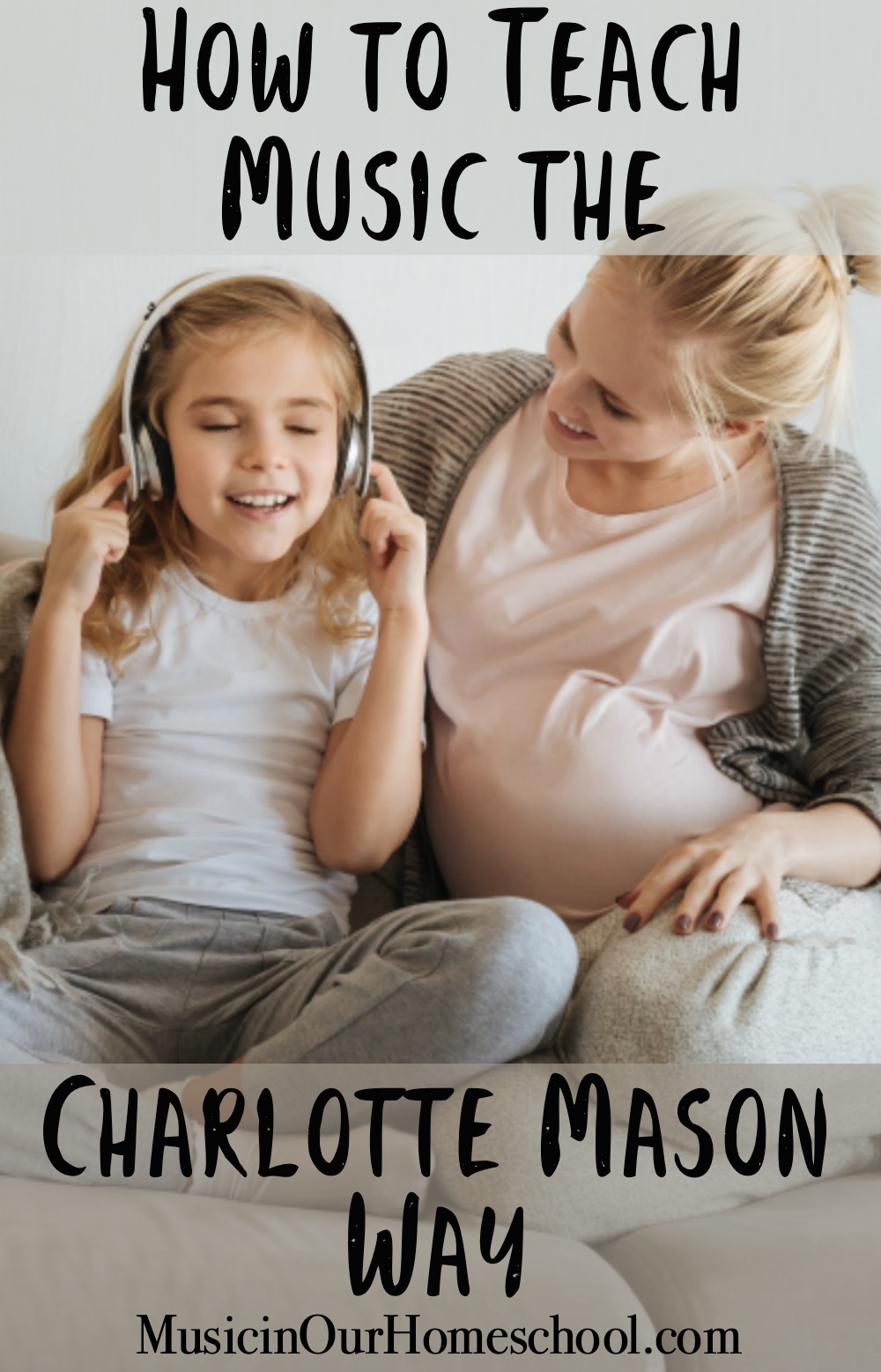
Disclosure: I get commissions for purchases made through affiliate links in this post.
How to Teach Music the Charlotte Mason Way
"Music! Into the drab and hurried blur of breathless twentieth-century life, allow time and enjoyment and growth for this aspect of our humanness."
~Susan Schaeffer Macaulay in For the Children's Sake
Disclosure: I get commissions for purchases made through affiliate links in this post.
Today, we will talk about the following aspects of Teaching Music the Charlotte Mason Way:
- Composer Study
- Hymn Study
- Folk Song Study
- Musical Creativity
- Dancing
- Living Books About Music
As I was researching about the Charlotte Mason way to teach music, I found that in addition to Charlotte herself, I learned a lot about the topic from both Susan Schaeffer Macaulay and Karen Andreola. Let's hear what they have to say.
In For the Children's Sake, Macaulay says,
"Children respond to the very best music. Get Brahms, Bach, Beethoven, Elgar, and Mendelssohn records. Play one at a time to a three-year-old; maybe the child will dance, clap, smile. Let children beat drums or march.
There is no need to start them off on a watery diet of musically-poor fare. Give them the best! Let a few works become friends. Then get good seats at a concert. Sit up close. See the child stare in wonder as the violinist plays, the conductor conducts, and the choir sings. If you have taken care that at least one item in the program is familiar to the child already, you will probably feel an excited tug and hear, 'Listen, they are playing our music!'"
What I love about Susan Macaulay says is that she recommended starting with a three-year-old. I would even go so far to say that you could start when your children are babies, or even when you're pregnant!
One of my greatest loves is teaching early childhood music and movement classes to the preschoolers at my homeschool co-op. I include great classical music each week during class so they can begin hearing this majestic music of the past. Sometimes they dance with scarves to it or other times play simple musical instruments. As the children get a little older, I encourage them to lie down with their eyes closed so they can focus better on the music or I have them draw on a notebooking page what they hear. It's a type of narration!
Mrs. Macaulay went on to say that
"if we follow Charlotte Mason's principles, have music be part of the life and atmosphere surrounding the young child. And, . . . it should be really good music."
If you have a question about what is "really good music," keep on reading!
1. Composer Study
Charlotte Mason wanted her students to be immersed in one composer's style at a time so they could really begin to know his or her style. Many proponents of her method suggest taking one composer and listening to only that composer's music for an entire semester, or term (trimester), so they learn only about two to three composers per year.
"It is a pity that we like our music as our pictures and our poetry mixed so that there are few opportunities of going through as a listener a course of the works of a single composer . . . Let young people study as far as possible under one master until they have received some of this teaching and know its style."
~Charlotte Mason
Easy Ways to do Composer Study
Let's get some ideas from Susan Macaulay and Karen Andreola about how they did composer study.
Mrs. Macaulay said one day a week "listen to part of a Bach chorale or a Beethoven symphony. At first one plays a short, catchy part of the whole work. It should not be a lesson, long and serious, which makes children squirm!"
There are several ways to do this. Karen Andreola found "Best of . . ." cassette tapes to introduce her children to great composers' music when they were little. It's even easier for us today!
One thing you can do is simply go to your account on Spotify or YouTube. Choose a composer and listen away. Most of these sites already have ready-made playlists of the great composers of the past!
Who are the Best Composers to Study?
Get a free link to The Best Composers to Study here.
When to Listen to the Music
Mrs. Macaulay said, "how about playing the different parts of the symphony after lunch while the children rest for fifteen minutes?"
You can listen at any time, especially if it's a classical instrumental piece with no vocals. (Sometimes singing in the compositions can be distracting if the kids need to concentrate on schoolwork or something of that nature.)
So, you can listen to music:
- During mealtimes
- During chores
- While driving in the car
- While drawing or painting
- During handicraft time
- While building with Legos/Magformers/Playmobil, etc.
- During naptime
- During bathtime
- Before bed
Listening to the Music Live
Don't neglect going to hear the music live. Check local libraries, nearby community colleges or universities, public schools, summer concert series, or city symphonies and operas for performance ideas.

As Mrs. Macaulay mentioned above, choose a piece from the program to listen to with your children ahead of time so they are familiar with it when they hear it there. She also said,
"I think that families, schools, and groups should consciously foster richness of musical enjoyment. Support concerts and choral singing (both doing it and going to listen)."
What are the Best Musical Pieces to Listen to?
I have written a post called "The Top 100 Delightful Classical Music Pieces All Children Should Hear."
Specific pieces listed there are linked to Youtube videos playing the music for composers of the Baroque era through the past few years!
If you'd like this list organized into an online course format, find it here:
Get 100 Delightful Classical Music Pieces Mini-Course here. It includes 5 pieces from the Renaissance as well as the others listed at the blog post.
Go More In-Depth With Composer Study
Mrs. Macaulay also said, "Grown-ups might go to a local college so that they can take a music appreciation class to expand their own enjoyment. We need to open doors for ourselves so that fresh breezes blow into our lives."
I'm excited to tell you that if this is your desire, to take a music appreciation class yourself, I have made that super easy for you. I have three full music appreciation courses for high school level that would be perfect for you, and you won't even have to go to a local college to do it!
Or, another way to go more in-depth is to use one of many fabulous music appreciation curricula available today. Do some short lessons to learn more about the composer you're studying, his style, and his music.
Suggestions of Music Appreciation Resources:
- Online courses from Learn.MusicinOurHomeschool.com such as Music Appreciation: Middle Ages Thru Classical Period for High School online course, Music Appreciation of the Romantic Era online course, and 20th Century Music Appreciation for High School online course
- SQUILT music appreciation curriculum byMary Prather
- Enrichment Studies Sound Bites by Erica Johns
- Classics for Kids website with podcast shows about composers, games, and activity sheets.
- Composers Download N Go Unit Study from Amanda Bennett
- SQUILT Meet the Instruments
- Composers Activity-Pak from Homeschool in the Woods
- A Young Scholar’s Guide to Composers by Bright Ideas Press
- Famous Composers Notebooking Pages
- SQUILT Meet the Instruments Bingo Game
- SQUILT Meet the Composers with flash cards
- Schoolhouse Teachers courses
- Maestro Classics CDs (music combined with a living audiobook!)
Living Books for Your Composer Studies
If you're a Charlotte Mason educator, you know that living books are encouraged to be used, rather than textbooks, to ignite the fire of learning in our kids. And, I am so excited that there are living books about composers and even about some of the specific pieces they wrote.
First of all, what is the definition of a living book?
My favorite is from Becky Aniol:
"A living book is a whole narrative beautifully written by an authority with contagious delight in his or her subject, which engages both the mind and the heart, capturing the imagination and inspiring interest in the subject, igniting a sense of virtue worthy of imitation, and compellingly inviting the reader, both young and old, to read on and read again."
So, as you study the composer in your homeschool, pick up one or more of these living books from the library so your children will get to know the composer and the pieces even better!
(Some of these are living audiobooks.)
J.S. Bach:
- Sebastian Bach, The Boy from Thuringia by Opal Wheeler
- Johann Sebastian Bach: Getting to Know the World's Greatest Composers by Mike Venezia
- Becoming Bach by Tom Leonard
- Bach's Goldberg Variations (Once Upon a Masterpiece) by Anna Harwell Celenza
Ludwig van Beethoven:
- Ludwig Beethoven and the Chiming Tower Bells by Opal Wheeler
- Beethoven's Heroic Symphony (Once Upon a Masterpiece) by Anna Harwell Celenza
- Ludwig Beethoven (Getting to Know the World’s Greatest Composers) by Mike Venezia
- The 39 Apartments of Ludwig Van Beethoven by Jonah Winter
Hildegard von Bingen
- Hildegard's Gift by Megan Hoyt
- Hildegard of Bingen: Scientist, Composer, Healer, and Saint by Demi
Johannes Brahms:
- Johannes Brahms (Getting to Know the World’s Greatest Composers) by Mike Venezia
- The Young Brahms by Sybil Deucher
Frederic Chopin:
- Frederic Chopin (Getting to Know the World’s Greatest Composers) by Mike Venezia
- Frederic Chopin, Son of Poland, Early Years by Opal Wheeler
- Frederic Chopin, Son of Poland, Later Years by Opal Wheeler
John Coltrane:
- Before John Was a Jazz Giant: A Song of John Coltrane
by Carol Boston Weatherford
Paul Dukas:
- The Sorcerer's Apprentice by Stephen Simon
Antonín Dvořák:
- Two Scarlet Songbirds: A Story of Anton Dvorak by Carole Lexa Schaefer
Duke Ellington:
- Duke Ellington's Nutcracker Suite (Once Upon a Masterpiece) by Anna Harwell Celenza
- Duke Ellington (Getting to Know the World’s Greatest Composers) by Mike Venezia
- Duke Ellington: The Piano Prince & His Orchestra by Andrea Davis Pinkney
- This Jazz Man
by Karen Ehrhardt
George Gershwin:
- George Gershwin (Getting to Know the World’s Greatest Composers)
by Mike Venezia
- Gershwin’s Rhapsody in Blue
by Anna Harwell Celenza
- Summertime
by Dubose Heyward
Edvard Grieg:
- In the Hall of the Mountain King by Allison Miller Flannery
George Frederick Handel:
- Handel at the Court of Kings
by Opal Wheeler
- My Name is Handel: The Story of Handel's Water Music
by Stephen Simon
- George Handel (Getting to Know the World's Greatest Composers) by Mike Venezia
- Hallelujah Handel
- by Douglas Cowling
Franz Joseph Haydn:
- Joseph Haydn the Merry Little Peasant by Opal Wheeler
- The Boy Who Loved Music by David Lasker
- Haydn's Farewell Symphony (Once Upon a Masterpiece) by Anna Harwell Celenza
Wolfgang Amadeus Mozart:
- Mozart, The Wonder Boy by Opal Wheeler
- Wolfgang Amadeus Mozart (Getting to Know the World’s Greatest Composers)
by Mike Venezia
Mussorgsky:
- Mussorgsky's Pictures at an Exhibition (Once Upon a Masterpiece) by Anna Harwell Celenza
Sergei Prokofiev:
- Peter and the Wolf
illustrated by Charles Mikolaycak
- Peter and The Wolf
by Stephen Simon
Camille Saint-Saëns:
- Carnival of the Animals by Stephen Simon
- Carnival of the Animals by Jack Prelutsky
- Saint-Saëns's Danse Macabre by Anna Harwell Celenza
Franz Schubert:
- Franz Schubert and His Merry Friends
by Opal Wheeler
Robert Schumann:
- Robert Schumann and Mascot Ziff by Opal Wheeler
Richard Strauss:
- Merry Pranks of Master Till by Stephen Simon
Igor Stravinsky:
- The Soldier's Tale by Stephen Simon
- Igor Stravinsky (Getting to Know the World's Greatest Composers) by Mike Venezia
Peter Tchaikovsky:
- The Story of Peter Tchaikovsky
by Opal Wheeler
- Peter Tchaikovsky (Getting to Know the World’s Greatest Composers)
by Mike Venezia
- The Story of Swan Lake by Stephen Simon
- The Nutcracker by Stephen Simon
- Tchaikovsky Discovers America by Esther Kalman
Antonio Vivaldi:
- I, Vivaldi by Janice Shefelman
- Vivaldi's Four Seasons by Anna Harwell Celenza
Various Composers or Musical Compositions:
- Lives of the Musicians: Good Times, Bad Times (and What the Neighbors Thought) by Kathleen Krull
- My First Classical Music Book by Genevieve Helsby
- Allegro by David W. Barghigiani
- Can You Hear It? by William Lach

Charlotte Mason also recommended doing Hymn Studies and Folk Song Studies.
Another thing that Charlotte Mason did was teach her students three hymns and three folk songs per semester. Again, you can check YouTube for videos to listen to different hymns or folk songs.
2. Resources for Hymn Study:
My online course called Great Hymns of the Faith: A Hymn Study for All Ages is my most popular course ever. I included several aspects in it that you can use in addition to simply listening to and singing the hymn each term. There are different versions of the hymn to listen to, sung by a variety of groups of singers as well as different instruments. I included the "story behind the song," tutorial videos to learn to sing the hymn in 4-part harmony, devotionals, copywork, and more.
Or, here are some other resources that can be used for Hymn Study:
- Hymns for a Kid's Heart by Wolgamuth and Tada
- Still Singing from Kim Sorgius of Not Consumed
Living Books for Your Hymn Studies
- Gutsy Girls: Strong Christian Women Who Impacted the World: Book Three: Fanny Crosby by Amy L. Sullivan
- Ten Boys Who Changed the World (Lightkeepers) by Irene Howat (about hymn-writer John Newton)
- The Runaway's Revenge: Introducing John Newton by Dave Jackson
3. Learning Folk Songs
Now, let's turn our attention to Folk Songs.
Karen Andreola shares lovely memories of singing folk songs as a child in her book A Charlotte Mason Companion:
"Facing each other, we sang seemingly endless choruses of American folk tunes and patriotic songs. The acts of colorful characters danced in my head for repeated performances: Old Dan Tucker's face was dripping with grease from washing it in a used frying pan, verses of Liza's bucket with a hole in it began to leak onto my forehead like Chinese water torture. The outside garbage bins disappeared as I wandered out on the range where the skies were not cloudy all day and beheld purple mountains' majesty."
Do you know these songs? Do your children? What culture, what history, what fun they are missing out if they don't!
Do you know exactly what a Folk Song is?
I have a 15-Minute Music Lesson called "What is a Folk Song" that you can check out for more details and examples. But, let me give you the definition here:
A folk song is a song that was transmitted orally, usually with an unknown composer, or a song that is influenced by that type of traditional song.
Music “transmitted orally” means that it was never written down. The people who composed the songs weren’t trained in music. Maybe it was a mom who made up a lullaby to get her baby to sleep, like "Rock-a-bye Baby" or a man who wrote a love song for the lady that he loved. It could be a song in story-form written by parents to tell the history of their society to their children or maybe a song that a man wrote as he was doing his work such as "Git Along Little Dogies," commonly sung by cowboys driving cattle.
Folk songs were carried down through history and the original composers were forgotten. But eventually, the songs were written down and continue to be sung and loved by people today.
In the early 20th century many composers and musicologists went into towns and countrysides to collect the “music of the people.” As a result, even more wonderful folk songs were saved, written down, and even recorded for posterity.
Folk songs are also songs that are inspired by the types of songs described above. Even though we know the composer Stephen Foster's name, many call songs like "Camptown Races" and "Oh Susanna" folk songs. And, then there are those commonly sung in the 1960s by "folk singers." These songs such as "This Land is Your Land," "Where Have All the Flowers Gone?," and "If I Had a Hammer" are considered folk songs as well.
Resources for Folk Song Study
Three of my favorite resources are Experience History Through Music titles, published by Diana Waring:
- America: Heart of a Nation
- Musical Memories of Laura Ingalls Wilder
- Westward Ho! Heart of the Old West
I've written reviews of these songbooks and CDs here.
And, here Diana Waring wrote a guest post on How to Experience Music as a Normal Part of Life.
Folk Song Course: A Folk Song a Week
A Folk Song a Week is the perfect resource for learning folk songs!
Each week learn a new folk song in your elementary homeschool, co-op, or classroom.
A variety of types of folk songs are included: historical songs, silly songs, classic songs, spirituals, campfire songs, holiday songs, rounds, lullabies, and foreign language songs.
With each folk song you get:
- a video of someone or a group singing it
- a video of Gena singing it
- background information about the song
- links to pdf downloads of the lyrics and sheet music
- copywork (dotted, regular, and cursive)
- coloring page
- picture book or living book suggestions (if available)
What are the 36 songs you'll learn?
- All the Pretty Little Horses
- Alouette
- Bicycle Built for Two
- Buffalo Gals
- Danny Boy
- De Colores
- Down By the Bay
- Down by the Riverside
- Erie Canal
- Follow the Drinking Gourd
- Frère Jacques
- Hava Nagila
- Here Comes Peter Cottontail
- Home on the Range
- Hush Little Baby
- I’ve Been Working on the Railroad
- Kookaburra
- Let There Be Peace on Earth
- Lullaby and Good Night (German Cradle Song/ Brahms's Lullaby)
- Make New Friends But Keep the Old
- Oh Susanna
- Old Dan Tucker
- On Top of Old Smoky
- Over the River and Through the Woods
- Row, Row, Row Your Boat
- Scarborough Fair
- She’ll Be Coming Round the Mountain
- Shenandoah
- Skip to My Lou
- Swing Low Sweet Chariot
- Take Me Out to the Ballgame
- The Water is Wide
- There’s a Hole in the Bottom of the Sea
- There’s a Hole in the Bucket
- When the Saints Go Marching In
- You are My Sunshine
Living Books for Your Folk Song Studies
I am so thrilled that every year new picture books are published with the lyrics of the great old folk songs and with whimsical illustrations. Ask your librarian for suggestions. In my library, they were all collected in one area under the category "Poems and Songs."
Here are only a few:
- Yankee Doodle by Patti Goodnow
- There Once Was a Man Named Michael Finnegan by Mary Ann Hoberman
- There's a Hole in the Bucket by John M. Feierabend
- Twinkle, Twinkle Little Star by Iza Trapani
- The Itsy, Bitsy Spider by Iza Trapani
Find a huge collection of Living Books for folk song study here.
4. Musical Creativity
Susan Macaulay said,
"One offshoot of musical life will be musical creativity. Small children chant their very own songs. Others, learning to play the piano, will begin to experiment with chords. Those learning, say, the recorder, would like to improvise along with a Purcell or Bach record of chamber music. Put out percussion instruments; encourage the young to accompany records. Accept and admire the products. Let them perform for you. . . . Even the preschool child will delight in singing, 'Twinkle, Twinkle, Little Star.'"
So, there are two things I'd like to mention about this. First of all, allow creativity and improvisation from your children. There have been so many times that I've heard my younger children "messing around" on the piano or drum set and it started to drive me crazy. Before I told them to "be quiet!" I remembered that this actually was a way to practice improvising and an opportunity to express creativity.
Just like you'll want to provide the best products for handicrafts, have some instruments in your home as well. They don't have to be expensive. Start with a set of rhythm sticks, shakers, jingles, and a small drum.
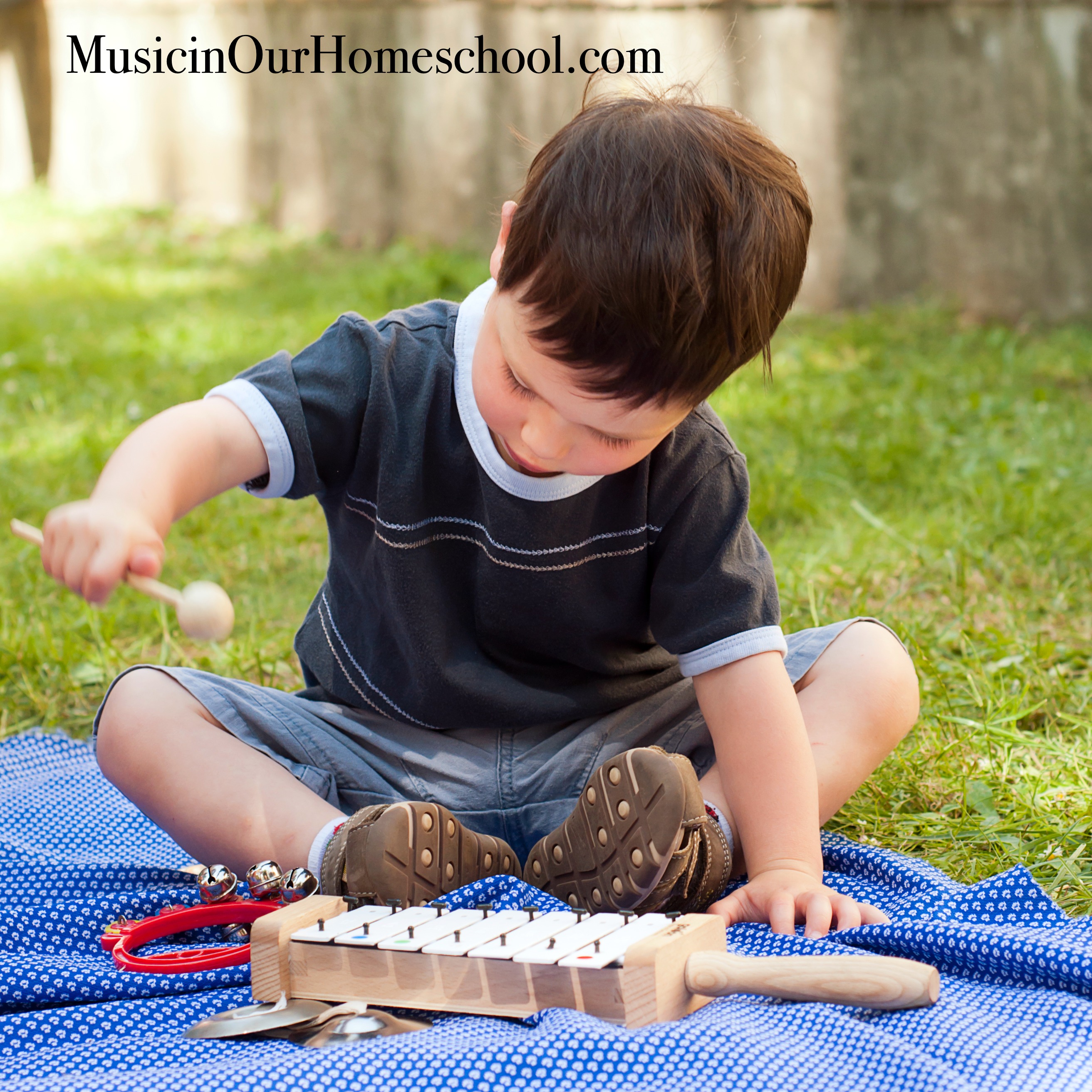
The preschoolers that I teach at my homeschool co-op absolutely LOVE the time during each class when I dump out the bag of percussion instruments and put on some music such as the theme from Pirates of the Caribbean or Cantina Band from Star Wars for them to play along with.
The second thing I'd like to mention regarding Mrs. Macaulay's quote above is that she mentioned preschool children singing "Twinkle, Twinkle, Little Star." Her book For the Children's Sake was published in 1984. I realize that in the last 35 years, some of these great preschool-level folk songs are no longer known by the parents of today.
I wrote another course called 10 Songs All Preschoolers Should Know.
It includes some of these songs:
- Baa, Baa, Black Sheep
- B-I-N-G-O
- Go Tell Aunt Rhody
- If You’re Happy and You Know It
- In a Cabin in the Wood
- London Bridge
- Mary Had a Little Lamb
- Old MacDonald
- The Farmer in the Dell
- Twinkle, Twinkle Little Star
5. Dancing
Mrs. Macaulay also had some things to say about dancing that I'd like to include here:
"When there is music, the child responds with dancing. . . Some music encourages dancing more than others. . . Children thrive on the atmosphere of joyous good music, feeling free to dance and sing and skip.
We have found that our family and friends have enjoyed the social aspect of square dancing, English country dances, and Scottish dancing. This gives a happy spice to community life, and it's nice to see six-year-olds mixing happily with mature adults in fun. Teenagers join in, and we are all people together, not segregated into age groups."
All four of my daughters love to dance, and all four boys even participated to some extent in musical theater, which included dancing. In fact, my husband is building a dance studio in our basement to facilitate the girls' learning and enjoyment of dance.
A Year of Charlotte Mason Music Lessons online course
In the course called A Year of Charlotte Mason Music Lessons, you'll be able to do this so simply.
Each month, you focus on 2 things: composer study and either a hymn or a folk song. You'll sing the same hymn or folk song for a full month.
You'll actually listen to the same composer for 3 months (one term) and hear a different piece each week.
So, that means 3 composers with 12 pieces/songs each, plus 4 hymns and 5 folk songs for the school year. And, it now includes two full year's worth of lessons!
Year 1 Composers:
- Johann Sebastian Bach (September-November)
- Peter Tchaikovsky (December-February)
- George Gershwin (March-May)
Year 1 Hymns:
- "A Mighty Fortress Is Our God" (October)
- "In the Bleak Midwinter" (December)
- "Be Thou My Vision" (February)
- "Come Thou Fount of Every Blessing" (April)
Year 1 Folk Songs:
- "Shenandoah" (September)
- "Over the River and Through the Woods" (November)
- "Alouette" (January)
- "She'll Be Comin' Round the Mountain" (March)
- "When the Saints Go Marching In" (May)
All videos (as well as most lyric sheets and sheet music) are included so it will be a breeze for you to teach music the Charlotte Mason way this year!
6. More Musical Living Books
Living Books about Instruments:
- The Remarkable Farkle McBride by John Lithgow
- Welcome to the Symphony: A Musical Exploration of the Orchestra Using Beethoven's Symphony No. 5 by Carolyn Sloan
- Ben's Trumpet by Rachel Isadora
- The Story Orchestra: Four Seasons in One Day by Jessica Courtney-Tickle
- Zin Zin a Violin by Lloyd Moss
- Story of the Orchestra : Listen While You Learn About the Instruments, the Music and the Composers Who Wrote the Music!
by Robert Levine
- Meet the Orchestra by Ann Hayes
- Music Over Manhattan by Mark Karlins
- 88 Instruments by Chris Barton
Living Books About Opera:
- Sing Me a Story: The Metropolitan Opera's Book of Opera Stories for Children by Jane Rosenberg
- Bravo! Brava! A Night at the Opera by Anne Siberell
- The Barefoot Book of Stories from the Opera by Shahrukh Husain
- Opera Cat and Encore, Opera Cat! by Tess Weaver
- The Great Poochini by Gary Clement
- Pet of the Met by Don Freeman
- The Magic Flute: An Opera by Mozart by Kyra Teis
- Madame Butterfly: The Story of the Opera by Giacomo Puccini by J. Alison James
Other Charlotte Mason Inspired Courses I've Written:
- Learn Classical Music with Cartoons
- Charlotte Mason Inspired High School Fine Arts
- Composer Study With 10 Lesser-Known Composers
To learn more about Charlotte Mason's method of education, I recommend:
- Charlotte Mason Homeschooling in 18 Easy Lessons by Cindy West
- The Charlotte Mason Companion by Karen Andreola (I LOVE this book!)
- For the Children's Sake by Susan Schaeffer Macaulay
- Ambleside Online website
- Simply Charlotte Mason website
- Sign up for the Charlotte Mason Online Conference and get 25 video sessions from the most amazing homeschool parents talking all about homeschooling, parenting and living in a Charlotte Mason inspired way.
Caveat: I have not read or listened to every single resource listed in this post. Please preview before using with your children.



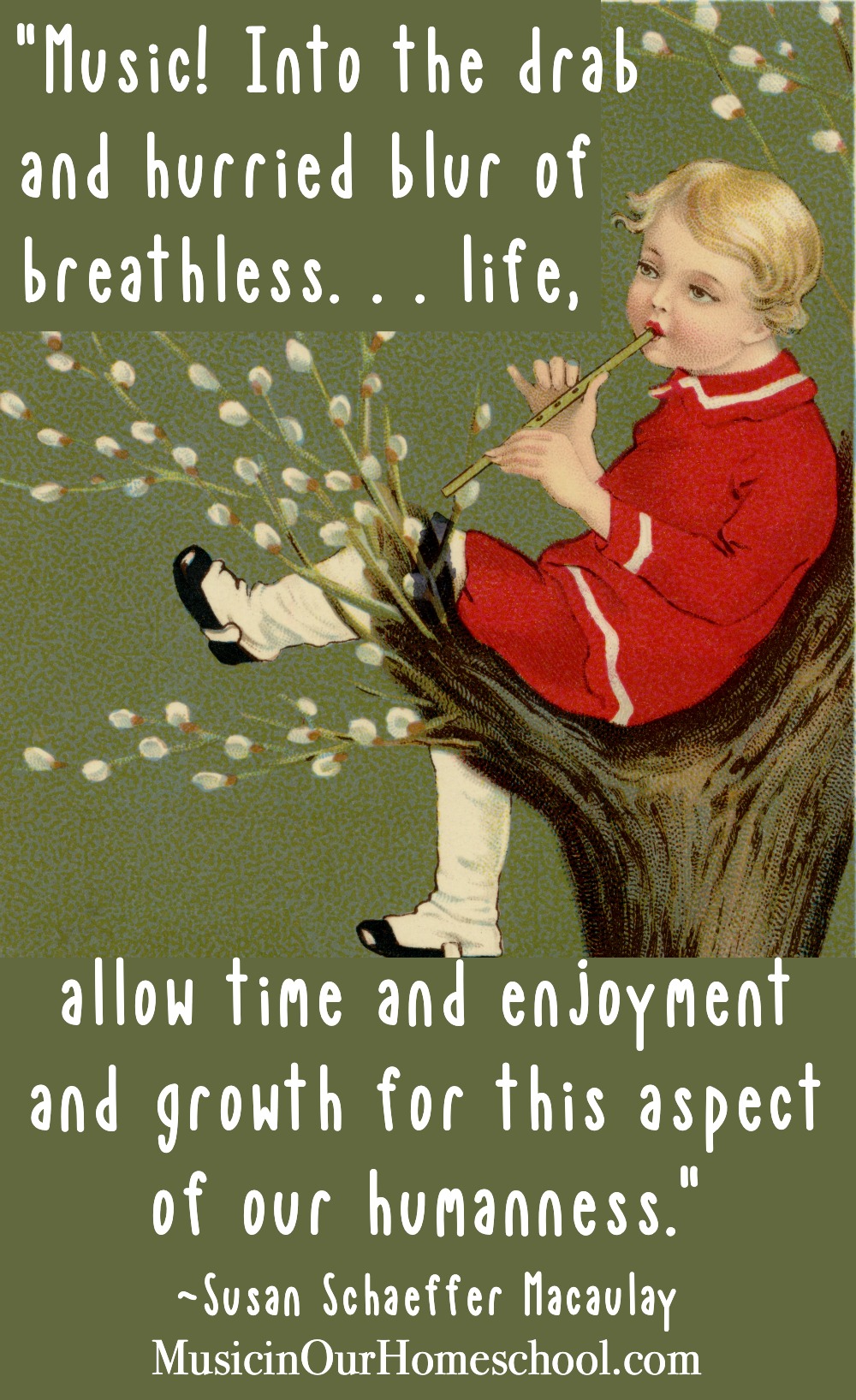
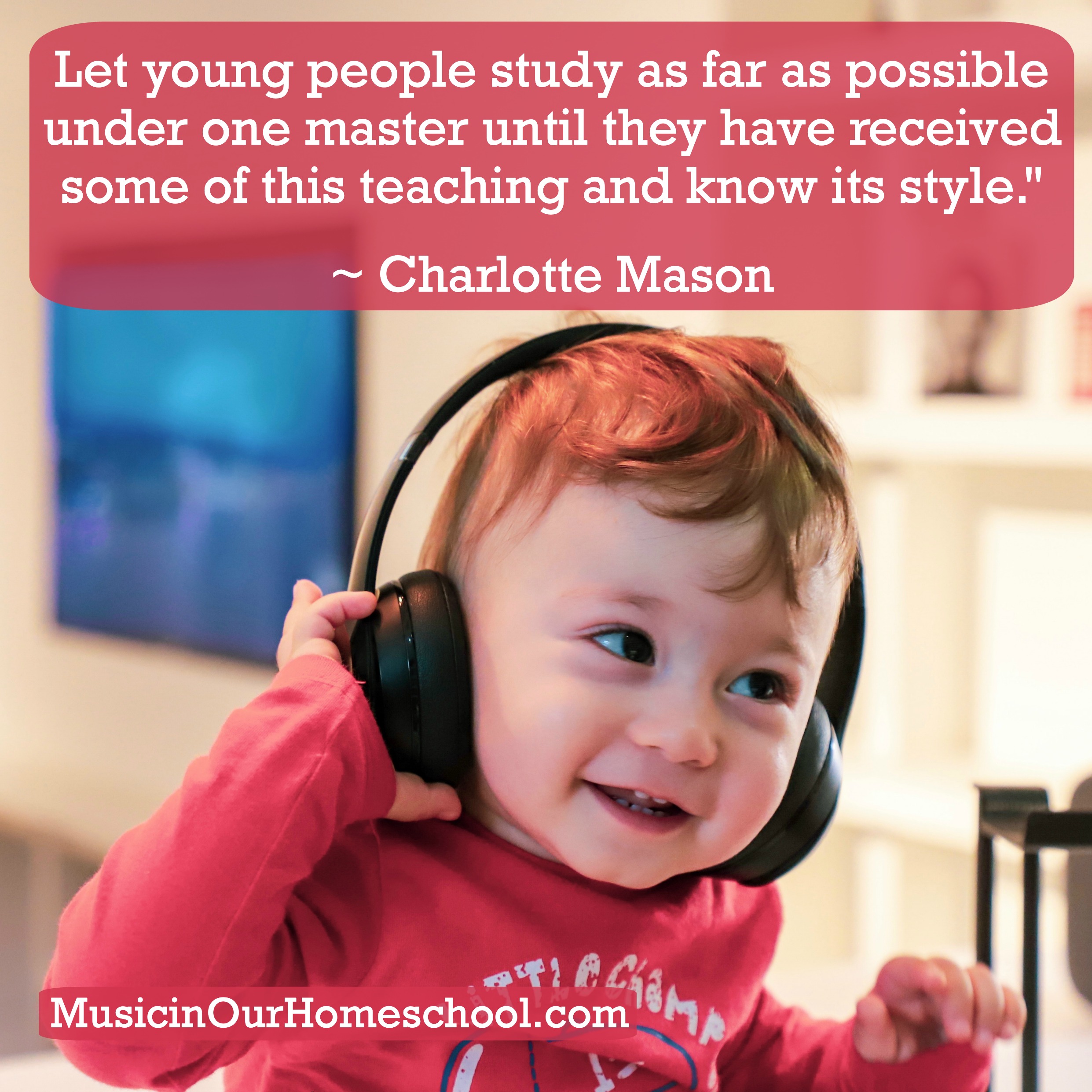


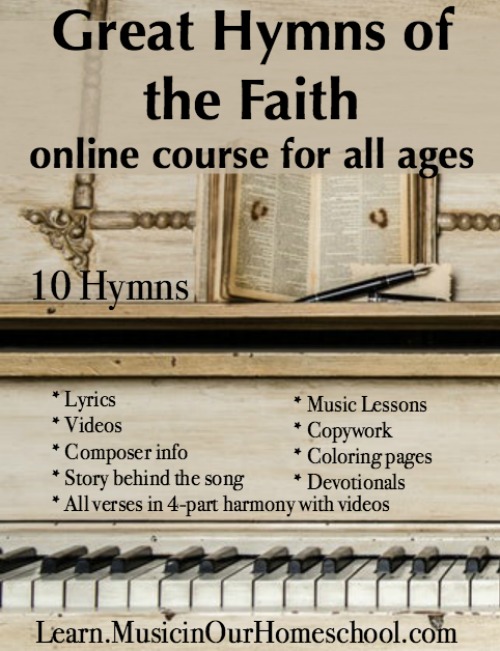
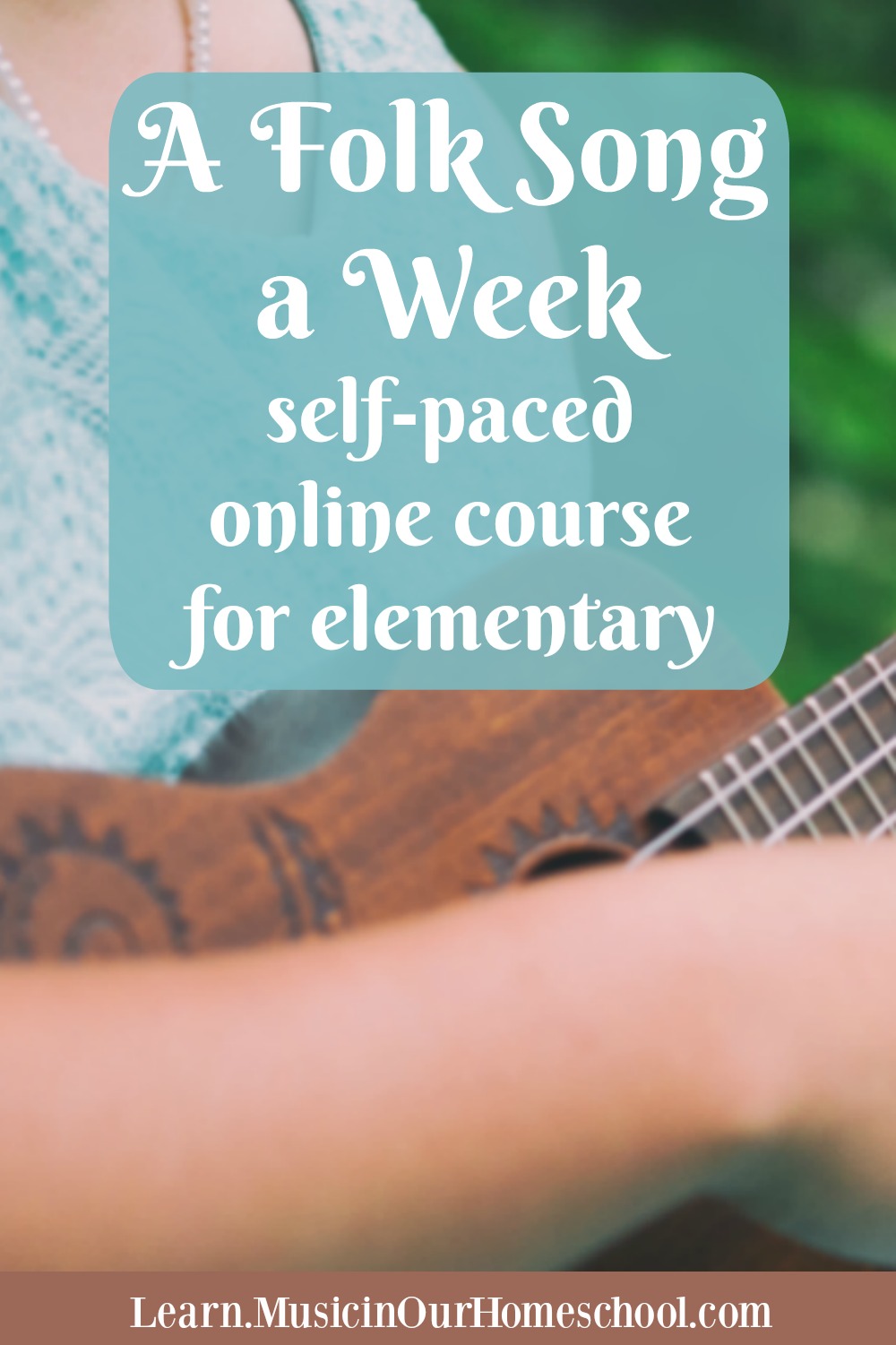
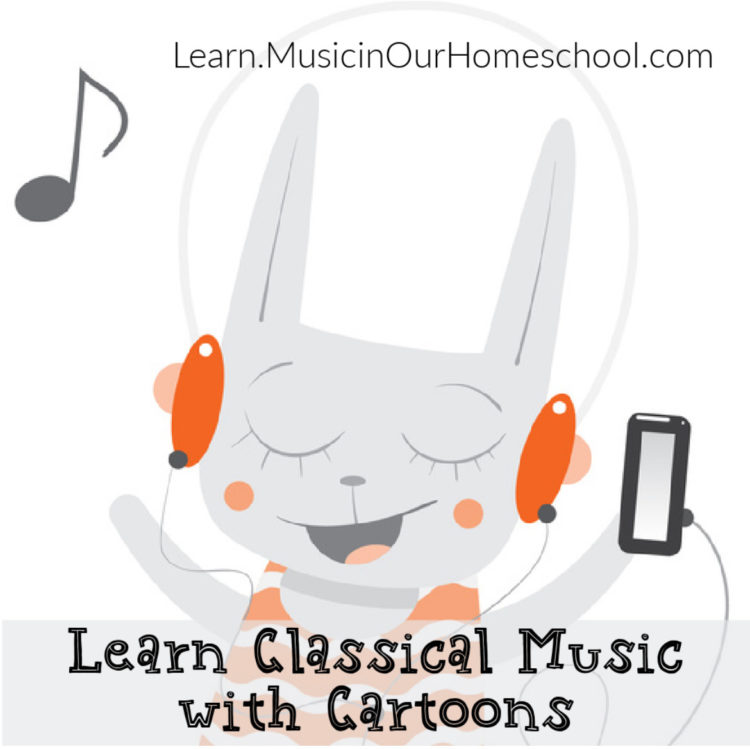
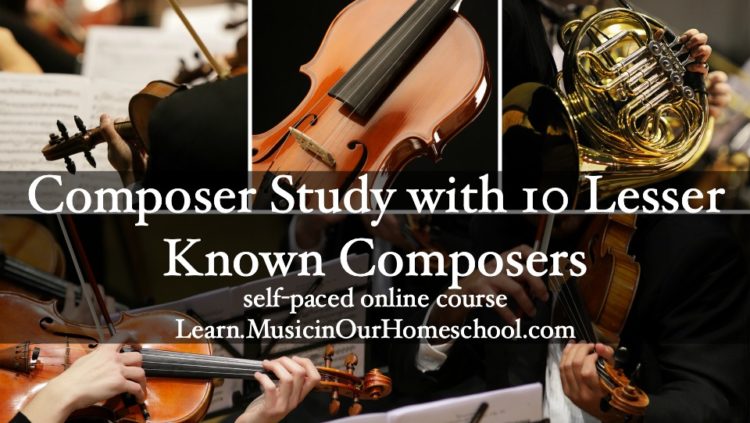

0 comments